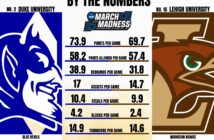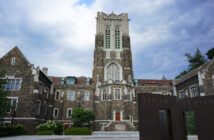Facing questions from faculty members regarding the school’s COVID-19 mitigation strategies, Provost Nathan Urban revealed the school was not sure as late as “mid August” whether “we were going to be able to identify the capacity to test any significant number of students.”
“It was literally really down to the wire that we had the capacity to test students for coming to campus,” Urban said. “We signed a contract days before the initial tests went out.”
Urban, speaking at a Lehigh faculty meeting on Nov. 19 in which upwards of 150 participants were logged on to the Zoom at certain points, also revealed the estimated price tag of testing for this spring is $7.6 million. The current plan is to test about 50 percent of the student body on a weekly basis.
“We’ve put in place with pretty high confidence the ability to test, as I’ve described — students weekly — during the spring,” Urban said.
As for the fall, though, Urban said Lehigh was not alone in racing to secure a testing protocol before the start of the semester.
“We know a number of institutions had to cancel their decision,” Urban said. “Lafayette completely changed their decision about whether to bring students back because their plan for testing fell through in late July or early August. So there was a tremendous amount of uncertainty about availability of testing in the fall.”
Lehigh has twice had to close campus this semester following two separate outbreaks of COVID-19 among students. The university moved to entirely remote learning and closed all libraries and gyms for two weeks on Oct. 8. Lehigh then loosened some restrictions before the latest spike forced Lehigh to shut back down on Nov. 19 — one day before it was planning on ending all in-person activities for the semester on Nov. 20.
There are now 240 active COVID-19 cases among students in Bethlehem, the most at any one point this semester. Positive students are being advised not to travel home for Thanksgiving break.
After two weeks of mandatory surveillance testing for non-remote students at the beginning of the semester, Lehigh went several weeks in September without any surveillance testing and only conducting testing of symptomatic students.
The Brown and White published a report comparing Lehigh’s testing plan — which at the time had included no additional surveillance testing after the first two weeks of the semester — with several other schools’ plans.
The university, citing rising case counts in the region, had then instituted a number of changes to its testing plan. In late September, the university announced additional random surveillance testing for non-remote students only. About 10 days later, after the week of Sept. 28 yielded a four percent positivity rate among surveillance tests, Lehigh announced it would include fully remote students living in Bethlehem in that random surveillance testing. Lehigh later announced optional exit surveillance testing for non-remote students only before Thanksgiving break.






Comment policy
Comments posted to The Brown and White website are reviewed by a moderator before being approved. Incendiary speech or harassing language, including comments targeted at individuals, may be deemed unacceptable and not published. Spam and other soliciting will also be declined.
The Brown and White also reserves the right to not publish entirely anonymous comments.